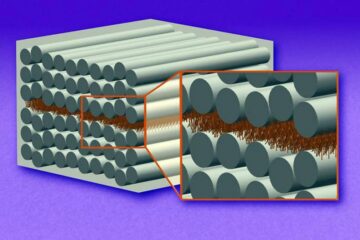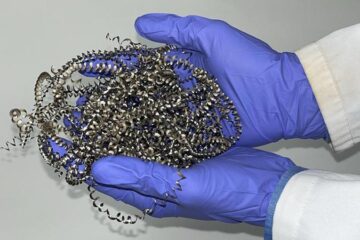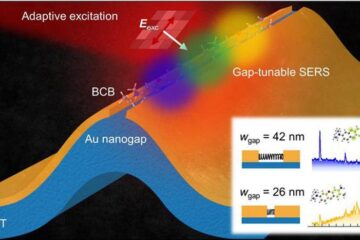Altering a protein makes mice less fearful

For humans and other animals, some fears seem to be, in large part, instinctive and inborn rather than learned. For example, laboratory animals fear certain predators even though they have never been exposed to a predator. However, little is known about the brain mechanisms involved in innate fear responses.
The UI study, published in the scientific journal, Biological Psychiatry, and available online July 30, shows that disrupting the ASIC1a protein alters innate fear reactions in mice and suggests that this protein may be a critical component of the brain systems that underlie innate fear.
The UI team, led by John Wemmie, M.D., Ph.D., assistant professor of psychiatry in the Roy J. and Lucille A. Carver College of Medicine, focused on ASIC1a because earlier research from the lab had shown that the protein was important in learned fear.
The new study examined the protein's role in innate fear by disrupting ASIC1a in mice and observing the effect on several well-studied innate fear behaviors.
Mice that lack the protein were significantly less fearful of open spaces, loud noises and predator odor than normal mice.
In the odor test, the researchers placed a beaker containing a fox-odor chemical in the mouse enclosure. Normal mice froze when they smelled the chemical and avoided the beaker. In contrast, mice lacking the ASIC1a protein showed a much-reduced freezing response and even climbed onto the beaker. The team showed that the loss of ASIC1a did not affect the mouse's sense of smell.
“These lab animals have never been exposed to a predator. The freezing response seems hardwired and intuitive,” said Matthew Coryell, a UI graduate student in the Neurosciences Program and lead author of the study. “Disrupting the gene reduced unconditioned, innate fear in the mice.”
In a second set of experiments, the team also showed that chemically inhibiting the ASIC1a protein in normal mice (using a component of tarantula venom) similarly blunted the innate fear response.
“Showing that pharmacologically blocking the channel reduces innate fear behavior, in theory, sets the stage for investigating whether therapies that block these ion channels in humans might be effective in anxiety disorders,” said Wemmie, who also is a physician and researcher at the Veterans Affairs (VA) Iowa City Health Care System.
The UI team found that ASIC1a is concentrated in brain regions that are critical for fear behaviors and responses, including the amygdala and an area called the bed nucleus of the stria terminalis (BNST), which is thought to be particularly important for innate fear behaviors. The study also shows that mice without ASIC1a have altered neuronal activity in these fear circuit structures.
The researchers speculate that because the gene is localized to brain regions involved in fear, targeting the ASIC1a protein might have a more focused effect on anxiety with fewer side effects than existing treatments, which affect systems throughout the brain, not just those involved in the fear response.
“Current treatments for anxiety have problems such as risk of addiction, slow onset of action and other types of side effects that make people not want to take them,” Wemmie explained. “If we could find something that was more specific, or even had a different set of side effects, that could be an advantage.”
Although this study examined the effect of disrupting the ion channel in mice, the mouse gene is very similar to the human gene, and the ASIC1a is present in human brains, where it is found in the amygdala.
There are no known mutations of the ASIC1a gene linked to altered fearfulness, but the UI study raises the possibility that mutations or variations in the gene might be associated with heritability of, or predisposition for, neuroticisim, phobias and other anxiety traits in humans.
The UI team plans to determine the specific sites of action of ASIC1a in the brain, and focus on understanding the role of the ion channel in the amygdala. They also are interested in whether the protein is involved in other types of psychiatric illness.
“Anxiety and other psychiatric illnesses, such as depression, are closely related. Some anxiety treatments often are effective for depression and vice versa,” Wemmie said. “This study raises that possibility that blocking this protein might be useful for depression as well as anxiety.”
Media Contact
All latest news from the category: Life Sciences and Chemistry
Articles and reports from the Life Sciences and chemistry area deal with applied and basic research into modern biology, chemistry and human medicine.
Valuable information can be found on a range of life sciences fields including bacteriology, biochemistry, bionics, bioinformatics, biophysics, biotechnology, genetics, geobotany, human biology, marine biology, microbiology, molecular biology, cellular biology, zoology, bioinorganic chemistry, microchemistry and environmental chemistry.
Newest articles

“Nanostitches” enable lighter and tougher composite materials
In research that may lead to next-generation airplanes and spacecraft, MIT engineers used carbon nanotubes to prevent cracking in multilayered composites. To save on fuel and reduce aircraft emissions, engineers…

Trash to treasure
Researchers turn metal waste into catalyst for hydrogen. Scientists have found a way to transform metal waste into a highly efficient catalyst to make hydrogen from water, a discovery that…

Real-time detection of infectious disease viruses
… by searching for molecular fingerprinting. A research team consisting of Professor Kyoung-Duck Park and Taeyoung Moon and Huitae Joo, PhD candidates, from the Department of Physics at Pohang University…





















